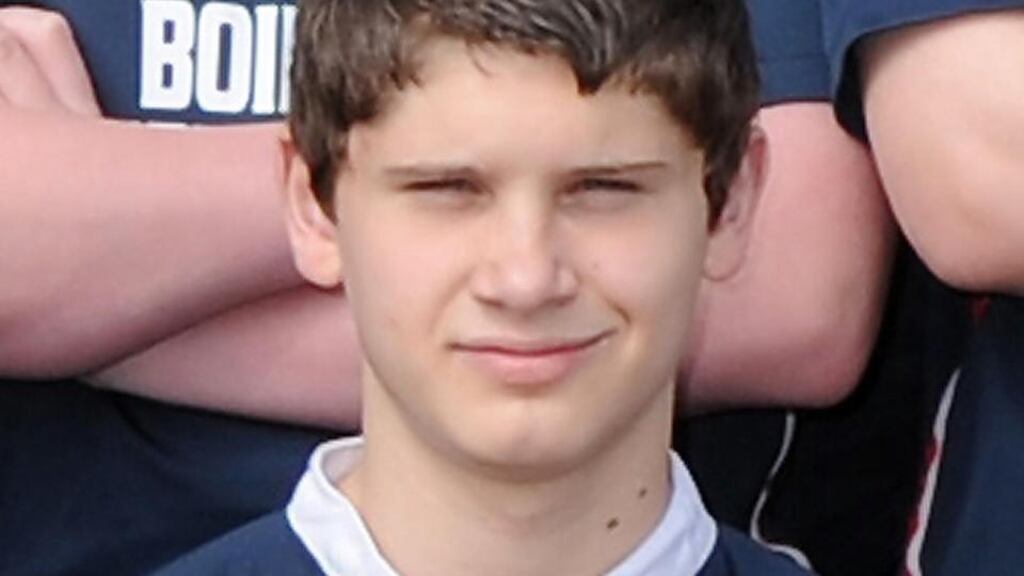A schoolboy rugby player has become the first person in Northern Ireland to die from second impact syndrome, a coroner has ruled.
Benjamin Robinson (14) collapsed on the pitch at Carrickfergus, Co Antrim, in January 2011 and died in hospital from head injuries.
Coroner Suzanne Anderson told an inquest in Belfast yesterday she believed the teenager had sustained concussion during a heavy collision with another player at the start of the second half but, despite his injury, had played on for a further 25 minutes.
“I am satisfied that he sustained concussion in the first four minutes of the second half. Unfortunately, neither the team coach nor the referee were made aware of his neurological complaints and he continued to play.”
Benjamin, who was playing for Carrickfergus Grammar School, was involved in two other clashes during the game with Dalriada at his school grounds. In the final minutes he fell unconscious and, despite frantic efforts by a doctor who had been spectating and medics at the Royal Victoria Hospital, he never recovered.
The coroner added: “I accept the consensus opinion that the features of this death are typical of second impact syndrome which occurs when two concussive-type injuries are sustained in a short space of time. It is exceptionally rare but can affect young people between 14 and 18 whilst engaged in sporting activity.
Children vulnerable
"This is the first recorded death of its kind in Northern Ireland and most probably the first in the UK. Medical science is not able to ascertain why an individual can succumb to this exceedingly rare syndrome."
There is some evidence that children are more susceptible to second impact syndrome than adults because their brains cannot recover as well from a minor knock.
Ms Anderson said she would present her findings to the head of Irish rugby and the North’s Minister for Education to highlight the dangers of second impact syndrome and raise awareness of concussion management. “I think everybody could learn from this.”
Outside the court, the boy’s parents said they would fight for the introduction of new legislation to protect young people engaged in contact sports.
His father, Peter Robinson, said: “We welcome the coroner’s findings and the recognition that there was a concussion early in the second half and he played a full half with concussion.
“Obviously it has been highlighted about education – it is about getting the message out to the schools. We had a policy in America, a template for all of this, that can be put in place tomorrow if they wanted. I would love to fight for Ben’s Law because why should children in the UK not have the rights like in America?”
Substituted earlier
The family has consistently argued that Benjamin should have been taken off the pitch earlier and believes if modern guidelines on concussion management had been put in place, he would still be alive.
Mr Robinson said he hoped something positive could come out of the tragedy.
“We lost Ben. There has to be something good come of this, just to make sure no other family has to go through this.”
There were harrowing scenes in Belfast’s Old Town Hall when video footage of the match was played. In it, Benjamin could clearly be seen clutching his head several times.
His mother, Karen Walton, said the coroner’s findings provided little comfort. “I don’t have my son back. I have an image of my 14-year-old son in his rugby kit the night before. He slept in his rugby kit because he didn’t want to forget anything and he didn’t want to let anybody down. He did not want to let anybody down during that match.”
The inquest previously heard how Benjamin had appeared dazed and confused towards the end of the game. A team-mate said he had not been aware of the score that his team was winning. It was also claimed that after one collision, Benjamin had to be helped up by the team coach.
Cause of death was officially recorded as cerebral oedema and subdural haemorrhage associated with second impact syndrome. – (PA)








